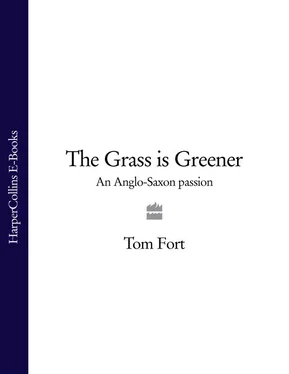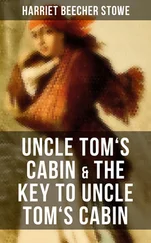All this wrestling with the moral dimension of Man’s responsibilities to the world given him by God may seem rather mystifying now, and most of its abundant harvest in the forms of prose and poetry lies at rest in dusty obscurity. Horace Walpole, another of those dimly remembered shadows of 18th-century literature, surveyed the age in his ‘Essay on Modern Gardening’. He identified Charles Bridgeman, who died in 1738, as the first designer to escape from the tyranny of geometry; and credited him (wrongly, as it had already featured in John James’s book) with the idea of the ha-ha, the sunken wall or ditch which physically separated the garden in front of the great house from the rest of the park, or the countryside beyond, without interrupting the progress of the eye across the scene. For Walpole, Kent was the hero of the age, a status in no way diminished by the fact that he was an architect and painter who worked with landscape, and had no evident interest in horticulture.
Walpole outlived both Kent and the man he nominated as Kent’s successor, Capability Brown. Brown had ‘set up with a few ideas of Kent’, presumably acquired when both men were employed by Lord Cobham at Stowe. With Brown came a great deal more grass. Under his direction, it spread over the walls and terraces, devouring beds and shrubberies, to the very walls and doors of the mansion; so close that someone complained that the cattle could wander inside. This is not the place to grapple with the hotly debated issue of Brown’s contribution to landscape gardening: whether he was a genius whose famous concern for the capabilities enabled him to create a series of uniquely English masterpieces for his aristocratic patrons; or a barbarian who laid waste to the varied inheritance of the past in order to slap on his own bland formula of lake, lawn and tree clump. Brown’s guiding principle was that beauty must be founded on stability and harmony, and that these indispensables were most reliably achieved through fluent, easy lines, gentle convexities and concavities. Whether consciously or not, he echoed the creed expounded by Edmund Burke in his Philosophical Inquiry into the Origin of our Ideas of the Sublime and the Beautiful . Smoothness, wrote Burke, is a ‘quality so essential to beauty that I do not recollect anything beautiful that is not smooth’. To support this fantastic assertion, he instances the shape and texture of leaves, of mounds in gardens, of streams, of the surface of furniture, of the skin of women. ‘Most people’, Burke contends, ‘have observed the sort of sense they have had of being swiftly drawn in an easy coach on a smooth turf with gradual ascents and declivities. This will give a better idea of the beautiful, and point out its probable cause, than almost anything else.’
Nonsense this may well be; but the notion was embraced with enthusiasm in the second half of the 18th century, and it sustained the development of the lawn as the essential canvas of the landscape garden. Capability Brown’s most voluble apologist, the Reverend William Mason, composed a long and unreadable poem, ‘The English Garden’, glorifying among much else the master’s deployment of the ha-ha, which
… divides
Yet seems not to divide the shaven lawn
And parts it from the pasture; for if there
Sheep feed, or dappled deer, their wandering teeth
Will, smoothly as the scythe, the herbage shave,
And leave a kindred verdure.
The Arcadian idyll pictured in Mason’s leaden verses achieves a glimmering of reality in a series of paintings of Sir Thomas Lee’s seat, Hartwell House in Buckinghamshire, which were executed by a Spaniard, Balthasar Nebot, in the late 1730s, and may now be seen at the county museum in Aylesbury. They illustrate neatly the manner in which new fashion was often grafted on to, rather than replaced, what was inherited. The elaborate topiary, grown to extraordinary heights during the previous half century, is retained. Sculpted heads in yew stand proud over sharp-edged walls of green. But instead of regarding the old rectangular parterres, they stare out over a medley of temples, statues and other cheerful stonework commissioned from James Gibb to brighten the place up.
The avenues between the high hedges are mostly of grass, as smooth as cloth. While the quality – ladies in billowing dresses with caps on their heads, gentlemen in wigs, short coats, breeches and silk stockings – stand around, the labourers labour. Two scythemen are in blouses, rough trousers and squashed black hats. One swings the double-handed cutter, the other is sharpening his blade. A lad has laid his besom on the ground and is gathering the cuttings into a basket. A girl in cap and long skirt is wielding her broom, close to a gang of mythological characters in stone, with few clothes on.
Elsewhere in the Hartwell paintings, a view of the wilderness behind the house gives glimpses of an obelisk, a temple, a turret and something resembling an igloo. Someone is pulling a roller across the grass towards a nude ancient with huge buttocks, while his fellow is gathering up more cuttings. In the distance, beyond a hedge, a flock of those useful animals dubbed the ‘fleeced foragers’ by William Mason are foraging. Another view shows foragers both fleeced and uddered a-nibble. In the foreground grass is being heaped by two-legged beasts of burden next to a pair of pensive gods. The lawns sweep right up to the walls of the mansion, the front door opening on to the bowling green, upon which the idle rich are at play. The green is enclosed by grass slopes, surmounted by dark barriers of evergreen.
There is another painting of Hartwell, executed twenty years later, in 1757, by a hand other than Nebot’s. By now the topiary has been dug up, and the Octagonal Pond has been replaced by a lake of more ‘natural’ aspect. The classical statues have clearly been breeding. What has not changed are the roles. The gentry and their ladies are still sauntering about murmuring pleasantries to each other, while to one side or the other the peasantry sweat in a silence disturbed only by the swish of the scythe blade or the rasp of sharpening stone on metal. And the smooth, green turf, so soothing in appearance, so insistent in its demands, stretches away as it ever did, and does to this day.
The Hartwell paintings give an idea of how they tended the stuff. But how did they grow it? To lay down the vast expanses required by the Brownian system was a mighty undertaking. The records at Chatsworth in Derbyshire – where Brown was at work in the 1760s – tell us that, having swept away the formal terraces and parterres to the east of the house, he had the ground sown with hayseed, and then left it to its own devices. But there was at least one famous garden creator who did take a closer interest.
A visitor to Painshill, near Cobham in Surrey, wrote in 1769: ‘The general scheme of Mr Hamilton’s garden … is a great Lawn, supposed 200 acres, spotted with trees and surrounded on two sides by Pleasure Grounds.’ The Honourable Charles Hamilton, youngest son of the sixth Earl of Abercorn, organized the making of that lawn himself, and described how it was done in a letter to the Duke of Leinster. These were the essentials:
Cleansing the ground thoroughly from weeds, and laying it down smooth; if any ground was very foul, I generally employed a whole year in clearing it, by ploughing it sometimes five, but at least four times, and harrowing it very much after each ploughing, first with an Ox Harrow, then with small Harrows; this harrowing brings up all the couch grass and weeds to the surface; which after every harrowing I had raked up in heaps and burned … to make the ground even I made them plough the ridges into furrows … then harrow across the ridges … I set a few men to work with spades to beat about some of the loose earth.
Читать дальше












